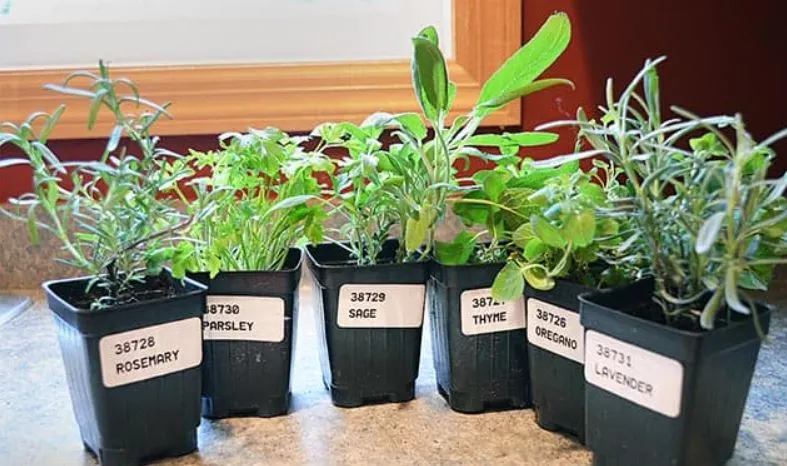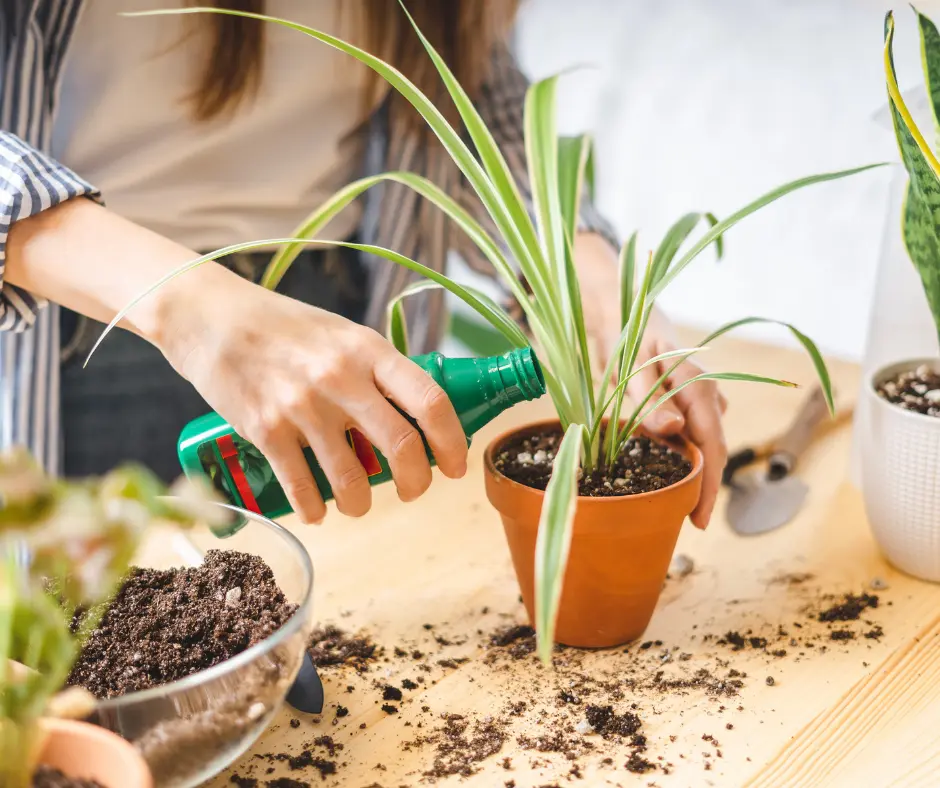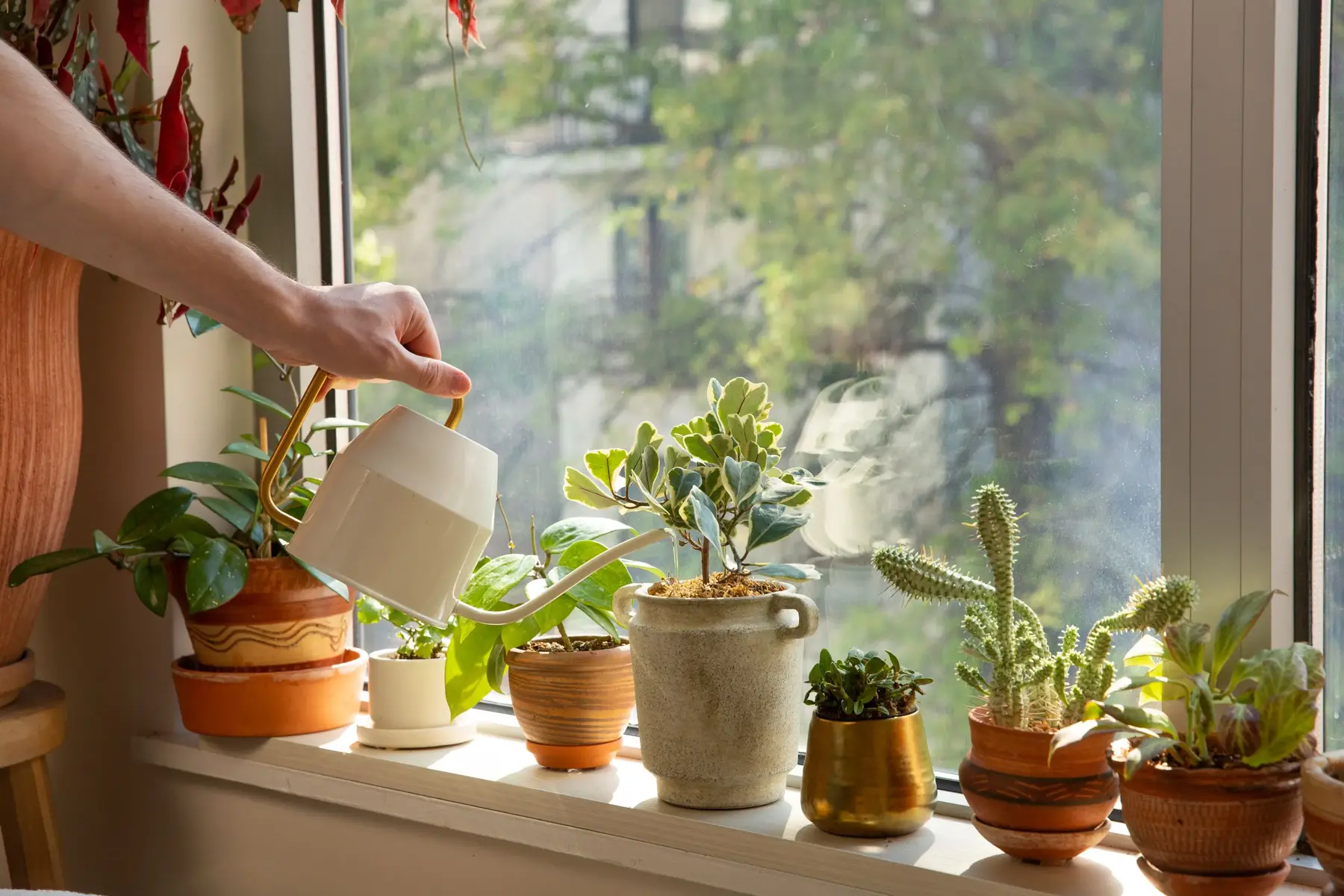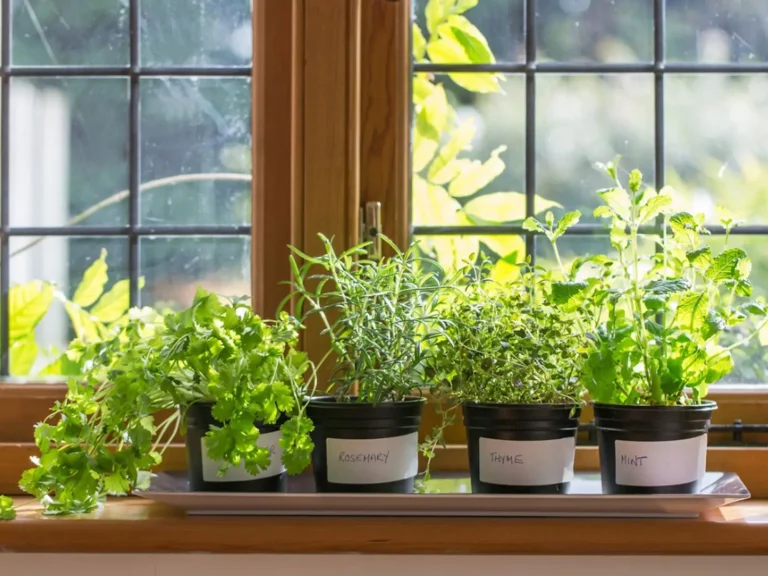Contents
Introduction
Ever dream of having a fresh, fragrant garden right inside your apartment? Growing herbs in containers is a fantastic way to add a touch of nature to your living space, and it’s easier than you might think! Whether you want to spice up your meals with homegrown basil, enjoy the fresh aroma of mint, or simply create a green oasis in your home, indoor herb gardening has got you covered.
Why should you consider growing herbs indoors? For starters, it’s incredibly convenient. Imagine reaching for a handful of fresh parsley or a sprig of rosemary whenever you’re cooking, without needing to run to the store. Plus, indoor herbs can brighten up your space, adding color and life to your apartment.
The key to successful indoor herb gardening is choosing the right container. Herbs need room to grow, but that doesn’t mean you need a big garden. Small pots or hanging baskets work perfectly, as long as they provide good drainage. And don’t worry if you don’t have a green thumb—starting an indoor herb garden is a great way to dip your toes into gardening without too much hassle.
In this guide, we’ll walk you through everything you need to know about growing herbs in containers. We’ll cover how to pick the best herbs for your space, how to choose and care for your containers, and even tips for keeping your plants healthy and thriving. Ready to transform your apartment into a mini herb haven? Let’s dive in!
Choosing the Right Herbs for Indoor Growth
When it comes to growing herbs indoors, picking the right ones can make all the difference. You want herbs that thrive in an indoor environment, so you can enjoy fresh, flavorful additions to your meals without a lot of fuss. Don’t worry if you’re new to this—there are some herbs that are practically made for indoor life!

Let’s start with some popular choices:
- Basil: This herb loves warmth and sunshine, making it a perfect pick for a sunny windowsill. Basil grows quickly and can really elevate your dishes with its rich flavor.
- Parsley: Parsley is a great option if you’re looking for something low-maintenance. It does well in moderate light and can handle a bit of neglect. Plus, it’s a fantastic garnish for almost any dish.
- Chives: These are hardy little plants that don’t need a lot of light, so they’re perfect if your apartment doesn’t get tons of sunlight. Chives have a mild onion flavor and are great for adding a fresh touch to salads and soups.
- Mint: Mint is a speedy grower and adds a refreshing flavor to everything from teas to desserts. Just be ready to prune it regularly, as it can spread quickly and take over its container.
- Cilantro: This herb prefers cooler temperatures and can be a bit sensitive to light changes. If you can provide a stable environment, cilantro is perfect for adding a burst of flavor to your dishes.
So, how do you choose the right herbs for your apartment? Think about the light you have available. Some herbs, like basil and cilantro, need lots of sunlight, while others, like chives and parsley, can handle less. Also, consider how much space you have. Herbs like mint can get a bit unruly, so you might want to use a larger container or even a hanging basket.
And don’t forget to think about your culinary preferences. Pick herbs you love to use in your cooking, so you’ll get the most enjoyment out of your indoor garden. With the right herbs and a little care, you’ll have a thriving indoor herb garden in no time!
Selecting the Right Containers
Choosing the right containers for your indoor herb garden is like picking the perfect home for your plants. The right container can make all the difference between a thriving herb garden and a struggling one. So, let’s dive into what you need to know about selecting containers that will help your herbs grow healthy and happy.
Types of Containers
First up, let’s talk about the different types of containers you can use:
- Traditional Pots: These are the classic choice for indoor gardening. They come in all sizes and materials, making them versatile and easy to manage. Just make sure they have drainage holes to prevent water from pooling at the bottom, which can lead to root rot.
- Hanging Baskets: If you’re short on space, hanging baskets are a fantastic option. They’re great for herbs like mint and chives that can spill over the edges and create a lush, green look. Just be sure to hang them somewhere they can get enough light.
- Window Boxes: These are perfect if you have a sunny windowsill. Window boxes can accommodate multiple herbs at once, and they’re a stylish way to bring greenery into your space. They also make it easy to rotate the plants to ensure they all get enough light.
- Self-Watering Pots: These pots are a bit more high-tech and can be a lifesaver if you tend to forget about watering. They have a built-in reservoir that provides a steady supply of moisture to your herbs, helping to keep them healthy and happy.
Container Material
The material of your container can affect how well your herbs grow:
- Plastic: Lightweight and budget-friendly, plastic pots are easy to handle and often have good moisture retention. They’re a great choice if you’re just starting out.
- Clay: Clay pots are porous, which means they allow air to circulate around the roots. However, they can dry out quickly, so you might need to water more often. They’re also heavier, which can be a plus for stability.
- Ceramic: Ceramic pots come in beautiful designs and are often quite sturdy. They’re a bit heavier than plastic, which helps keep your plants steady. Just make sure they have proper drainage holes.
- Metal: Metal containers are durable and often have a modern look. However, they can get very hot or cold depending on the weather, so they might not be the best choice if your apartment temperature fluctuates a lot.
Ensuring Proper Drainage
Proper drainage is crucial for healthy herbs:
- Drainage Holes: Always choose containers with drainage holes. These holes allow excess water to escape, preventing waterlogging and root rot. If your container doesn’t have holes, you can create some yourself or use a different pot.
- Drainage Trays: These are handy for catching any excess water that drains out of the container. They protect your surfaces and help keep things tidy. Plus, they can help you monitor how much water is being used.
By picking the right container and ensuring it has proper drainage, you’ll create a perfect home for your indoor herbs. Whether you go for a classic pot, a stylish window box, or a handy self-watering system, your herbs will appreciate the care and attention you give them. Happy planting!
Soil and Fertilization
Getting the soil and fertilization right is essential for keeping your indoor herbs healthy and thriving. Think of soil as the foundation of your herb garden and fertilization as the extra boost your plants need to grow strong and flavorful. Let’s break down what you need to know to get these elements just right.

Choosing the Right Soil
The type of soil you use can make a big difference in how well your herbs grow. Here’s what to look for:
- Potting Mix vs. Garden Soil: When it comes to container gardening, potting mix is your best bet. Unlike garden soil, potting mix is specially designed to be lightweight and well-draining, which is perfect for herbs growing in pots. Garden soil can be too heavy and may not drain well enough for container plants.
- Soil Composition: A good potting mix should be light and airy, allowing water and air to reach the roots easily. Look for a mix that contains ingredients like peat moss, perlite, or vermiculite. These components help keep the soil well-aerated and prevent it from becoming compacted, which is crucial for healthy root growth.
Fertilization
Fertilizer provides the extra nutrients your herbs need to thrive. Here’s how to get it right:
- Types of Fertilizers: There are two main types of fertilizers: organic and synthetic. Organic fertilizers, like compost or fish emulsion, are derived from natural sources and often improve soil health in the long run. Synthetic fertilizers, on the other hand, are chemically manufactured and can provide a quick nutrient boost. Choose based on your preference for natural versus quick results.
- Application Methods: How you apply fertilizer can vary. Some fertilizers are mixed into the soil, while others are added to water and used as a liquid feed. Follow the instructions on the fertilizer package for how much and how often to apply. Over-fertilizing can harm your herbs, so it’s better to start with less and adjust as needed.
- Signs of Over-Fertilization: Too much fertilizer can cause problems, like leaf burn or a build-up of salts in the soil. If you notice yellowing leaves, a crusty layer on the soil surface, or slow growth, you might be over-fertilizing. Flush the soil with water to help remove excess nutrients and reduce the amount of fertilizer you’re using.
By choosing the right soil and providing appropriate fertilization, you’re setting your herbs up for success. The right mix will keep your plants’ roots healthy, while the right nutrients will encourage robust growth and delicious flavors. With a bit of care and attention, your indoor herb garden will be a flourishing, fragrant addition to your home!
Providing Adequate Light
Light is crucial for growing healthy herbs indoors, as it helps them perform photosynthesis and thrive. Without the right amount of light, your herbs might not grow as well or could become leggy and weak. Here’s how to make sure your indoor herb garden gets the light it needs to flourish.
Natural Light
If you’re lucky enough to have a sunny spot in your apartment, you’re in good shape:
- Ideal Light Sources: Most herbs love bright, indirect sunlight. A south-facing window is often the best spot because it gets the most light throughout the day. If your window has a sheer curtain, that’s even better—your herbs will get plenty of light without being exposed to harsh rays.
- Adjusting for Light Limitations: If your apartment doesn’t get a lot of natural light, don’t worry. You can still grow herbs by making the most of what you have. Reflective surfaces, like mirrors or white walls, can help bounce light onto your plants. Also, consider rotating your containers regularly so all sides of the plants get some exposure.
Artificial Light
When natural light isn’t enough, artificial lighting can be a game-changer:
- Grow Lights: These are specially designed lights that mimic natural sunlight. There are a few types you might consider:
- Fluorescent Lights: These are affordable and effective for growing herbs. They come in compact versions that fit easily into small spaces.
- LED Grow Lights: These are more energy-efficient and can be adjusted to different light spectrums. They’re a bit pricier but last longer and use less electricity.
- Setting Up Light Fixtures: To get the most out of your grow lights, place them close to your herbs—about 6 to 12 inches above the plants is usually ideal. Herbs typically need around 12-16 hours of light a day, so set up a timer to keep their light schedule consistent. Make sure the lights are adjustable so you can move them as the plants grow.
By providing the right amount and type of light, you’ll help your indoor herbs grow strong and healthy. Whether you’re relying on natural sunlight or supplementing with artificial lights, making sure your herbs get enough light is key to a thriving indoor garden. With the right lighting setup, you’ll be on your way to enjoying fresh, homegrown herbs in no time!
Watering and Maintenance
Keeping your indoor herbs well-watered and properly maintained is essential for their health and productivity. Herbs have specific watering needs, and regular maintenance will help them thrive and keep them looking their best. Here’s how to make sure you’re giving your herbs the care they need.

Watering Techniques
Proper watering is crucial for healthy herb growth. Here’s how to do it right:
- How to Water Properly: The key is to keep the soil consistently moist but not waterlogged. Check the soil regularly by sticking your finger about an inch into the soil. If it feels dry at that depth, it’s time to water. When watering, do it thoroughly so that water reaches the roots. Avoid letting the pot sit in water, as this can lead to root rot.
- Tools for Watering: A watering can with a long spout is handy for reaching into pots without making a mess. If you’re worried about over or under-watering, self-watering systems can be a great solution. These pots have a built-in reservoir that helps maintain consistent moisture levels and reduces the need for daily watering.
Pruning and Harvesting
Regular pruning and harvesting keep your herbs healthy and productive:
- Pruning Techniques: Pruning helps your herbs grow bushier and prevents them from becoming leggy. For most herbs, trim off the top few inches of growth regularly to encourage new shoots. Remove any yellow or dead leaves to prevent disease and keep the plant looking tidy. For herbs like basil, pinch off the flower buds to keep the leaves flavorful.
- Harvesting Tips: Harvesting your herbs at the right time promotes healthy growth and keeps them flavorful. Pick leaves or stems regularly to encourage the plant to produce more. For herbs like chives and mint, snip off leaves as needed. For others like basil, you can cut the whole plant back by about one-third to encourage new growth.
Pest and Disease Control
Indoor herbs can be prone to pests and diseases, but with a little vigilance, you can keep them in check:
- Common Indoor Pests: Aphids, spider mites, and whiteflies are common culprits. Check your plants regularly for tiny pests or sticky residue. If you spot any, gently wash the leaves with a mixture of water and mild soap, or use an insecticidal soap if needed. Keeping your plants healthy and well-maintained will also help prevent pest infestations.
- Disease Prevention: Indoor herbs can sometimes suffer from fungal infections or other diseases. Look for signs like mold on the soil surface or discolored spots on the leaves. Improve air circulation around your plants by not overcrowding them and avoid overhead watering to reduce humidity, which can promote fungal growth.
By following these watering and maintenance tips, you’ll keep your indoor herbs healthy and productive. Proper care will ensure that your plants are thriving and providing you with fresh, aromatic herbs for your kitchen. With a little attention, your indoor garden will be a green, vibrant success!
Troubleshooting Common Issues
Even with the best care, indoor herbs can sometimes run into problems. Knowing how to troubleshoot common issues can help you get your plants back on track and ensure they stay healthy. Here’s a guide to addressing some of the most frequent challenges you might face with your indoor herb garden.
Yellowing Leaves
Yellowing leaves can be a sign of various issues. Here’s what to look for:
- Causes and Solutions: Yellowing can occur due to overwatering, which deprives roots of oxygen and causes them to rot. Check if the soil is soggy; if it is, cut back on watering and let the soil dry out a bit. Yellow leaves can also indicate a nutrient deficiency. Consider using a balanced fertilizer to provide essential nutrients. Finally, ensure your herbs are getting enough light, as insufficient light can also cause leaves to turn yellow.
Slow Growth
If your herbs aren’t growing as quickly as you’d like, there could be several reasons:
- Potential Problems: Slow growth can be caused by inadequate light. If your herbs aren’t getting enough light, consider moving them to a brighter spot or using grow lights. Poor soil conditions might also be to blame; make sure you’re using a good-quality potting mix. Additionally, check for signs of pests or diseases that could be stunting growth. Regularly inspect your plants and treat any issues promptly.
Mold and Mildew
Mold and mildew are signs of excessive moisture or poor air circulation. Here’s how to handle them:
- Identification and Remedies: Mold often appears as a white, fuzzy substance on the soil surface or leaves. To address mold, reduce humidity by improving ventilation and avoiding overhead watering. Ensure your pots have proper drainage and avoid letting them sit in saucers of standing water. For mildew on leaves, prune affected areas and increase air circulation around the plants. If necessary, you can use a mild fungicide to treat the problem.
By keeping an eye out for these common issues and addressing them promptly, you’ll help your indoor herbs stay healthy and vibrant. Troubleshooting problems early on can prevent them from becoming more serious and keep your herb garden thriving. With a bit of attention and care, you’ll enjoy a successful and flourishing indoor garden!
Creative Ideas for Herb Container Gardens
Taking your indoor herb garden to the next level can be a lot of fun and add a unique touch to your living space. Whether you’re looking to maximize your limited space or add a bit of flair to your kitchen, there are plenty of creative ways to showcase your herbs. Here are some innovative ideas to inspire your indoor herb garden:
Vertical Gardens
If you’re short on floor space, consider going vertical:
- Using Wall-Mounted Planters: Wall-mounted planters are perfect for creating a lush, green display without taking up valuable space. These planters can be installed on walls or fences and are great for herbs that trail or grow downward, like mint. Look for planters that allow you to arrange multiple herbs in a compact, eye-catching setup.
- DIY Projects: Get crafty with DIY vertical gardens! You can repurpose old pallets, shoe organizers, or even hanging shoe racks to create your own herb garden. Simply attach small pots or containers to your chosen frame and hang it on the wall. This not only saves space but also adds a personal touch to your garden.
Kitchen Herb Gardens
Transform your kitchen into a herb haven:
- Designing Functional Spaces: Make the most of your kitchen by integrating herbs into your décor. Use decorative pots that complement your kitchen’s style or install a small herb garden on a windowsill or countertop. This way, your herbs are not only handy for cooking but also enhance your kitchen’s aesthetic.
- Maintaining Easy Access: Keep your herbs within easy reach by placing them in a spot where you’ll remember to use them. A small cart with wheels, a tiered stand, or even a magnetic spice rack can be practical and stylish solutions. These setups make it simple to grab fresh herbs while cooking and keep your kitchen organized.
Herb Garden Kits
For those who prefer a ready-made solution, herb garden kits are a fantastic option:
- Overview of Kits: Herb garden kits come with everything you need to start growing herbs, including seeds, soil, containers, and instructions. They’re perfect for beginners or anyone looking for a hassle-free way to start an indoor herb garden. Many kits are designed to be self-contained, so you can set them up on a countertop or windowsill without worrying about additional supplies.
- Benefits and Drawbacks: Kits can be incredibly convenient and often come with stylish containers and detailed instructions. However, they can sometimes be more expensive than purchasing individual components. Make sure to choose a kit that fits your space and preferences, and be aware of the specific needs of the herbs included.
By incorporating these creative ideas, you can make your indoor herb garden not just functional but also a beautiful and engaging part of your home. Whether you go for a vertical garden, a stylish kitchen setup, or a convenient herb garden kit, you’ll enjoy the added charm and freshness that your herbs bring to your space. Happy gardening!
Conclusion
Starting an indoor herb garden is a fantastic way to bring a bit of nature into your apartment and enjoy fresh, flavorful herbs right at your fingertips. From choosing the right herbs to setting up the perfect containers and providing the right care, there’s a lot you can do to ensure your indoor garden thrives.
In this guide, we’ve covered everything you need to know, from selecting herbs that suit your space and light conditions to choosing containers that offer proper drainage and enhance your decor. We’ve also explored the importance of using the right soil, providing adequate light, and keeping up with watering and maintenance to keep your herbs healthy and productive. Plus, we’ve shared tips for troubleshooting common issues and creative ideas to make your herb garden truly unique.
Remember, the key to a successful indoor herb garden is a little bit of planning and regular care. Start with herbs you love, choose containers that fit your space, and ensure your plants get the light and nutrients they need. With a bit of attention and patience, you’ll have a thriving indoor garden that not only adds beauty to your home but also provides fresh, aromatic herbs for your cooking.
So why wait? Dive into indoor herb gardening and transform your apartment into a green sanctuary. Your future self will thank you for the fresh herbs and the soothing green space you’ve created. Happy gardening!



